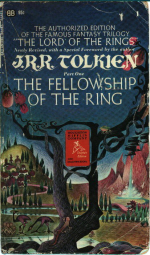Two Flaws in the SOPA
 This is the second post in a series looking at the Stop Online Piracy Act, a House bill that’s been getting a lot of attention lately. In Part I of this series I looked at Section 102 and concluded that it was largely unobjectionable. Section 102 essentially provides the DOJ with supplemental provisional remedies it can use against sites that are violating U.S. criminal laws but are beyond the effective reach of U.S. courts. There may still be valid concerns with Section 102, and I plan to address a couple in a later post, but it doesn’t seem to pose any special danger to the Internet or existing copyright law.
This is the second post in a series looking at the Stop Online Piracy Act, a House bill that’s been getting a lot of attention lately. In Part I of this series I looked at Section 102 and concluded that it was largely unobjectionable. Section 102 essentially provides the DOJ with supplemental provisional remedies it can use against sites that are violating U.S. criminal laws but are beyond the effective reach of U.S. courts. There may still be valid concerns with Section 102, and I plan to address a couple in a later post, but it doesn’t seem to pose any special danger to the Internet or existing copyright law.
Then there’s Section 103. The idea behind Section 103 appears to be to provide copyright owners in a civil case with similar provisional remedies as in Section 102, following some sort of notice-and-takedown scheme reminiscent of Section 512 of the DMCA. And if all Section 103 targeted was foreign “rogue sites” as well, then there would be much less cause for concern. But Section 103 appears to go well beyond that. In contrast to Section 102, there’s nothing in the definition of the sites targeted under Section 103 — sites “dedicated to theft of U.S. property” — that limits those sites to sites outside the jurisdiction of United States courts. In fact, Section 103 seems weirdly out of place next to the more limited Section 102, and is out of sync with how defenders of the bill are describing it, which is as a narrow provision designed to combat foreign “rogue sites.” Section 103 is weird in a number of ways that suggest that it is the result of a sort of pastiche compromise between a narrow provision targeting rogue sites in civil suits and an all-out amendment of Section 512 of the Copyright Act. There’s two aspects of Section 103 in particular that I find little short of bizarre: (1) it sets up a notice-and-takedown regime that, as far as I can determine, is completely voluntary, but it uses the word “shall” in describing what recipients must do; and (2) it refers to “a cause of action under this section” without ever describing what that cause of action is.

 The Supreme Court heard
The Supreme Court heard